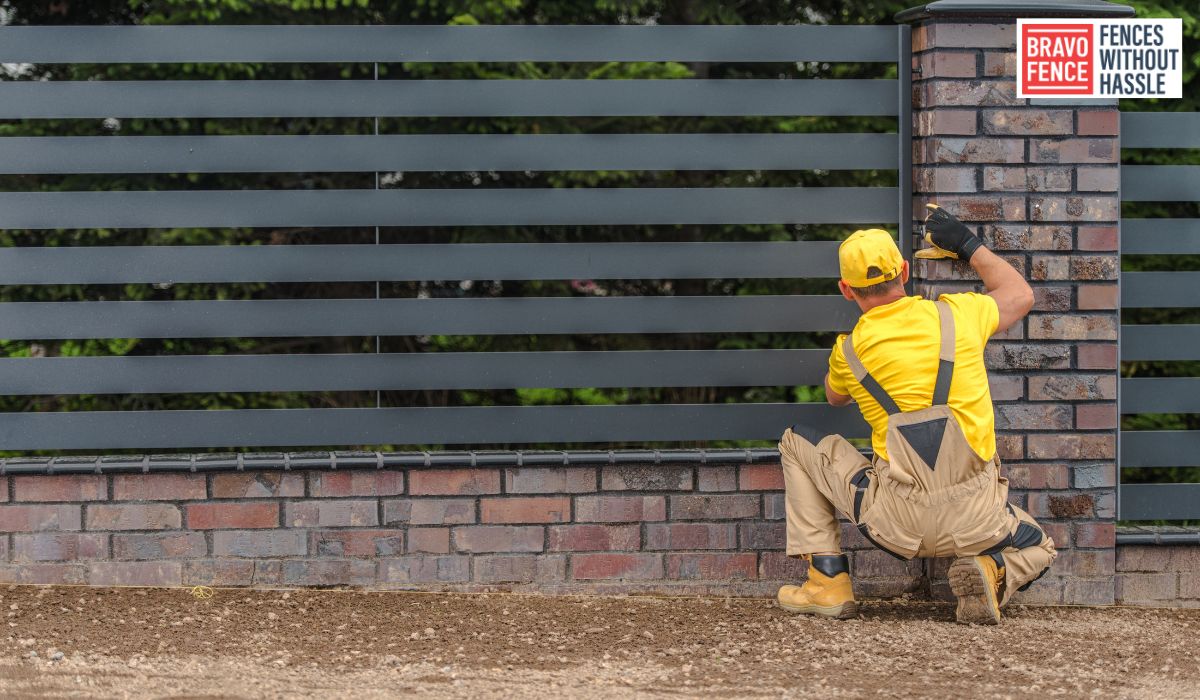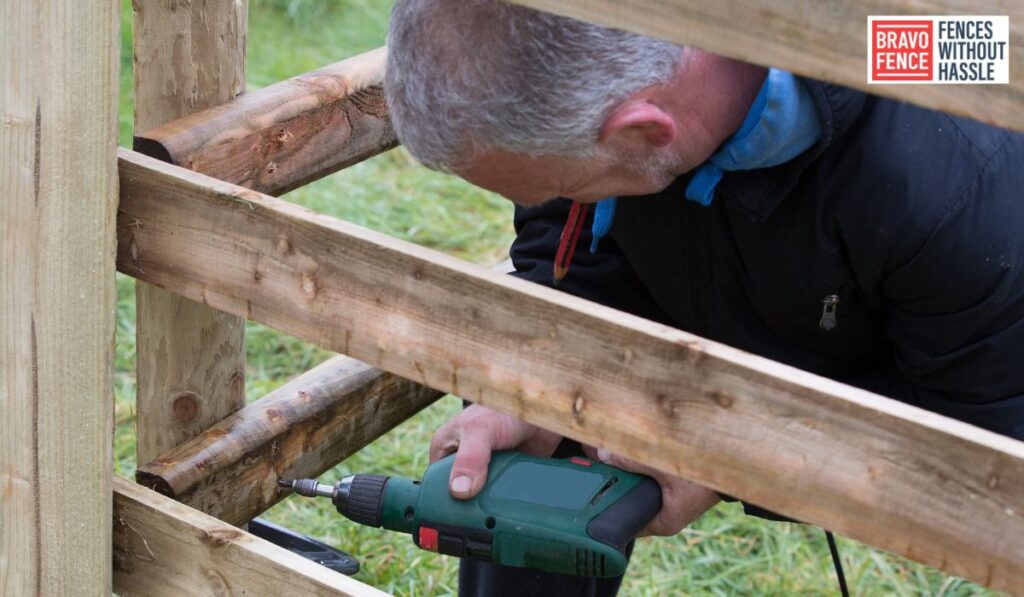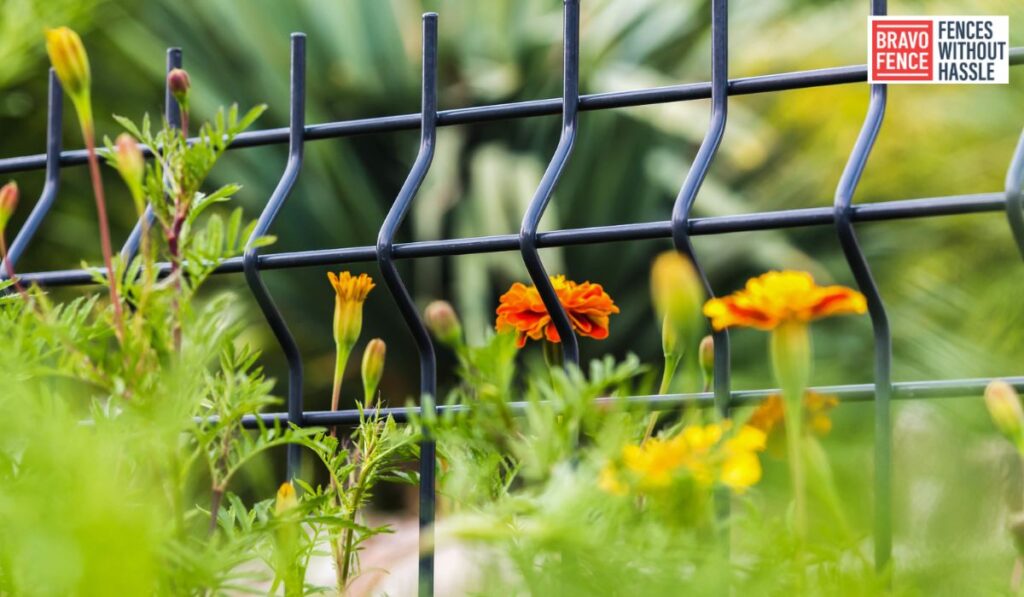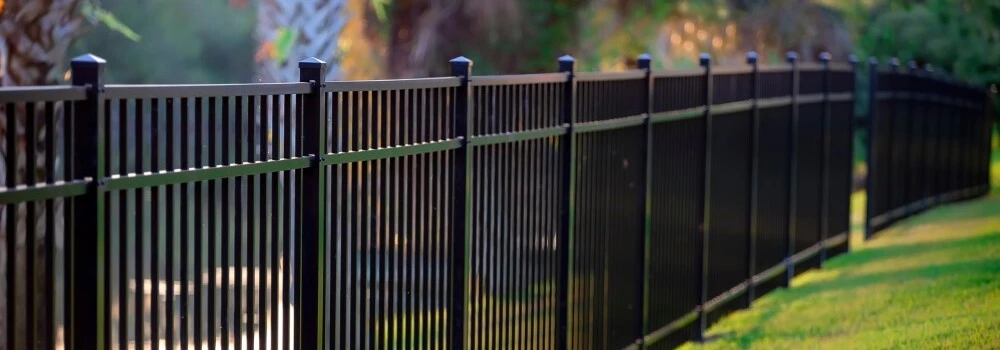
How To Install A Replacement Fence Panel
It always seems to happen at the worst times – a costly home repair.
If you own a home with a yard, you likely have a fence.
Maybe the fence came with the home and is starting to wear out.
Maybe you’ve endured some bad weather the past few years and parts of your fence are showing wear and tear or got blown out in a storm.
Now you need to figure out how to repair or replace your fence.
Luckily, there are ways to install a replacement fence panel without redoing the entire fence.
Assess the damage
How do you know if you need to replace a fence panel?
The most obvious way to tell is when the wind has knocked a panel right out!
But what about wood rot?
If your wood fence panel is rotting, the wood may appear discolored.
It may also have more obvious damages, such as splintering or warping.
You can do a quick test to check the wood. If you poke the wood panel with a screwdriver and the wood pushes in, then you likely have rotten wood beneath the surface.
Time to replace the panel!
You will also need to check your posts.
It doesn’t make much sense to replace a single wooden fence panel if the posts are compromised.
A single damaged post can ruin an entire fence line.
That why you must double-check that the fence’s posts are secure and level before beginning work on any individual panel.
Fix or reinforce a damaged post before starting to repair or replace a panel.
Installing a replacement fence panel
Once you’ve assessed the damage and repaired any fence posts, you are ready to get to work on installing a replacement fence panel.
Most vinyl or wood fence panels are made 8 feet long and the actual distance between fence posts cannot be greater than 96 inches.
Some panels are 72 inches long.
In such cases, the maximum space cannot exceed 6 feet.

Before you purchase any replacement parts, you’ll need to measure your fence.
How long does it take to replace fence panels?
A professional, like the pros at Bravo Fence Company, can easily repair your fence in a day.
If you are trying to DIY the project, you should allot more time than you’d anticipate, as you want to be as precise as possible.
Additionally, if you need to install a replacement fence panel due to rot or damage, it’s likely that more than one panel needs to go.
If you’re looking to replace more than one or two panels, you’re looking at a large job.
At that point, it may be worth it to call in professionals who can finish the job quickly and securely.
Should fence panels touch the ground?
In most cases, a wood fence should be installed at least two inches off the ground.
The posts should be the only fence components that contact the ground.
Wood pickets should never touch it.
However, if your fence was a DIY job or installed incorrectly, your wood may touch the ground.
This can cause the wood to absorb moisture and rot much more quickly.
If you are planning to install replacement fence pannels because of rotting at the bottom of your fence, you may be better off replacing the entire fence.
Then you can have a wooden fence installed properly, or you can choose a different material altogether.
Painting your wooden fence
If you are simply installing replacement fence panels instead of an entirely new fence, you certainly want to match the existing fence.
However, you may also take this as an opportunity to update your existing fence.
Stain and paint are two good options for updating and protecting wooden fences.
Does painting a fence make it last longer?
Painting or staining a wood fence can help your fence last longer and look better.
Either option will extend the lifespan of your fence by giving it some protection against rot, insects, wear, and tear.
Painting often does a better job of filling any cracks, covering imperfections, and provides longer-lasting protection than stain.
Paint also is typically more rot resistant and does a better job of preventing mold and sun damage.
When it comes to long-term effectiveness, both paint and stain will protect your fence.
However, paint may restrict the wood’s natural ability to breathe, increasing moisture content and potentially causing rot.
Is it better to paint or stain a fence?
Stain is more forgiving than paint and is quicker to apply.
Stain won’t require the use of a primer, and you won’t have to work as hard to get a uniform color as with paint.
If you have a textured or rough-hewn fence style, stain will work much better than paint.
Stain will enhance raw wood’s natural beauty and texture.
Unlike paint, stain won’t peel, crack or blister.
And you don’t have to worry about it causing rot by holding in moisture since it’s more breathable.
If you’re worried about making a mess, trust the professionals to stain your wooden fence for you.
What causes a fence to lean?
Natural weathering will cause a wooden fence to lean.
As a wood fence absorbs moisture from rain or sprinklers it swells and then dries out.
This stress on the fence panels and posts can cause it to shrink.
Over time, shrinking may cause wooden fence panels to crack or warp.
And that can result in a leaning fence.
If you have a wooden fence, it’s only a matter of time before parts or all of the fence will need to be replaced due to natural weathering.
What type of fence lasts the longest?
By this point, you may be thinking that wood fences, while attractive, are more work than they’re worth.
However, vinyl fencing lasts much longer than wood, requires virtually no maintenance, and won’t be destroyed by wood’s archenemies.
That’s right, with vinyl there’s no need to worry about termites, fungus, dry rot, or even fire!
Vinyl is somewhat more expensive than wood, but it can last 30+ years with minimal maintenance required.
Unlike wood that can warp, rot, or shrink over time, vinyl is rigid and resilient.
It is resistant to pests, rain, snow, temperature changes, and other elements.
That is why vinyl fencing is the longest-lasting fence material.
If you’re tired of patchwork fixes and installing replacement fence panels, consider a new vinyl fence.
Just call Bravo Fence Company for a quote and get started on your new, maintenance-free fence today!
Conclusion:
Installing a replacement fence panel can be a straightforward DIY project with the right tools and guidance.
By following the steps outlined in this guide and considering the FAQs below, you can successfully restore the security and aesthetics of your fence without the need for professional help.

Remember to prioritize safety and precision throughout the process to achieve the best results.
FAQs:
What tools do I need to install a replacement fence panel?
Commonly used tools include a saw, hammer, nails, level, measuring tape, and a cordless drill with screwdriver bits.
How do I choose the right replacement panel for my fence?
Measure the dimensions of your existing panel and choose a replacement that matches in size and style.
Should I replace just one panel or the entire fence section?
If only one panel is damaged, you can replace just that one. However, if multiple panels are in bad shape, consider replacing the entire section for a uniform look.
Do I need to remove the old panel completely?
Yes, removing the old panel is essential to install the replacement properly.
How deep should I dig the post holes for the new panel?
Typically, post holes should be around one-third the height of the fence panel and at least 2 feet deep for stability.
Should I use concrete to secure the fence posts?
It’s recommended to use concrete to anchor the fence posts securely and prevent them from shifting.
How do I ensure the replacement panel is level and plumb?
Use a level and shims to ensure the replacement panel is both level (horizontally) and plumb (vertically).
What type of nails or screws should I use to attach the replacement panel?
Use exterior-grade nails or screws that are rust-resistant to prevent deterioration over time.
Can I stain or paint the replacement panel?
Yes, you can stain or paint the replacement panel to match the rest of the fence and protect it from the elements.
How long does it take to install a replacement fence panel?
The time required depends on your experience and the complexity of the project. It may take a few hours to a full day for the entire process.
Tags: Everything You Need to Know About Cost Of Fence Panel Replacement, Everything You Need to Know About Diy Fence Panel Replacement, Everything You Need to Know About Where To Buy Fence Panels, Everything You Need to Know About Wooden Replacement Fence Panel, Inspiration and Tips on Custom Fence Panel Replacement Painting A Replacement Fence Panel, Inspiration and Tips on Replacing Fence Panels After Storm Damage, Inspiration and Tips on Upgrading Fence Panels, Top Ideas and Insights About Fence Panel Removal And Replacement, Top Ideas and Insights About Metal Fence Panel Replacement, Top Ideas and Insights About Vinyl Fence Panel Replacement
